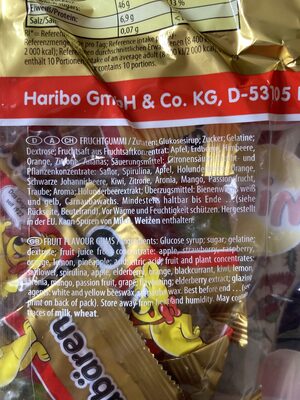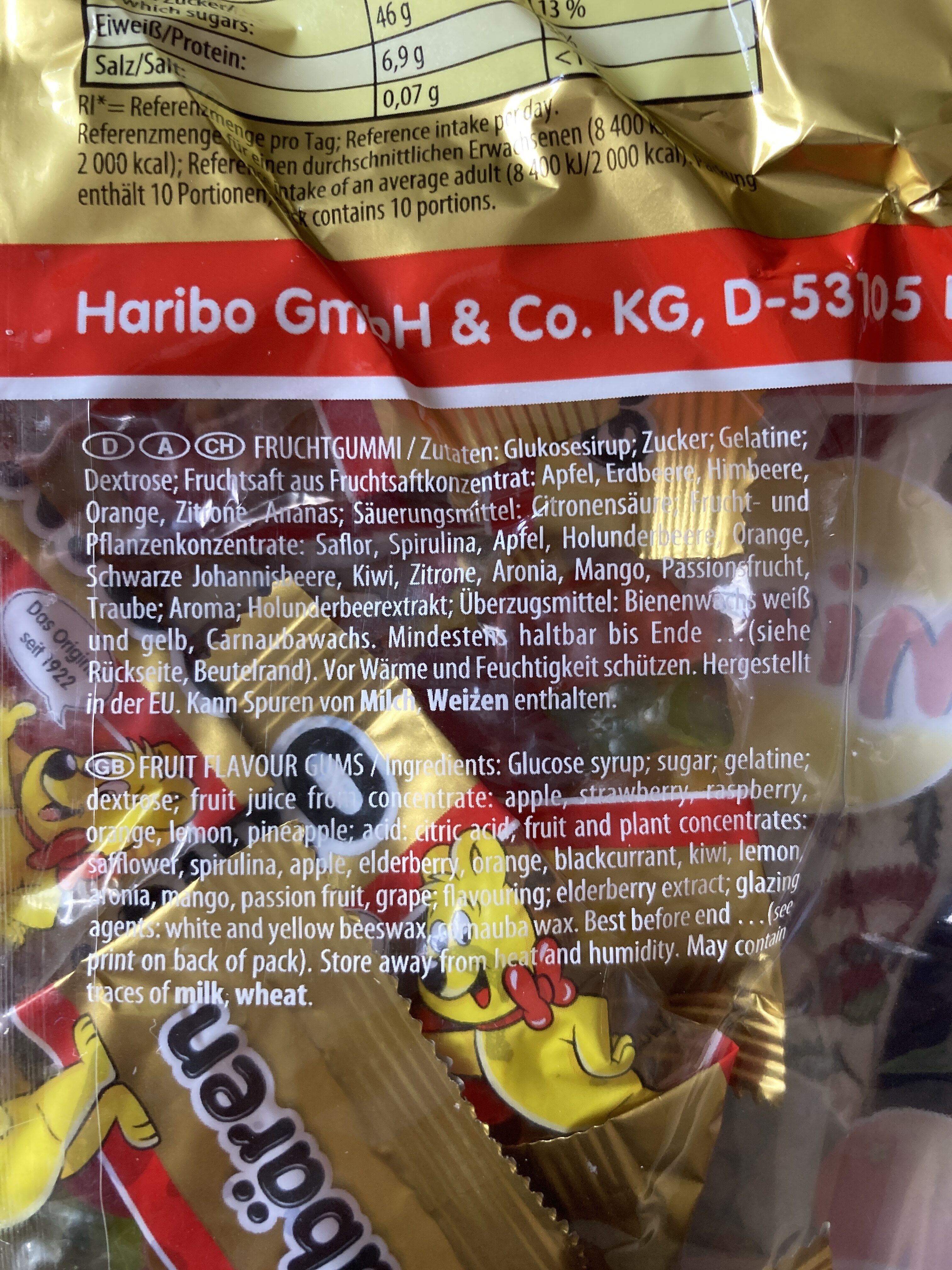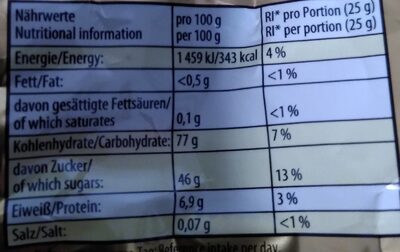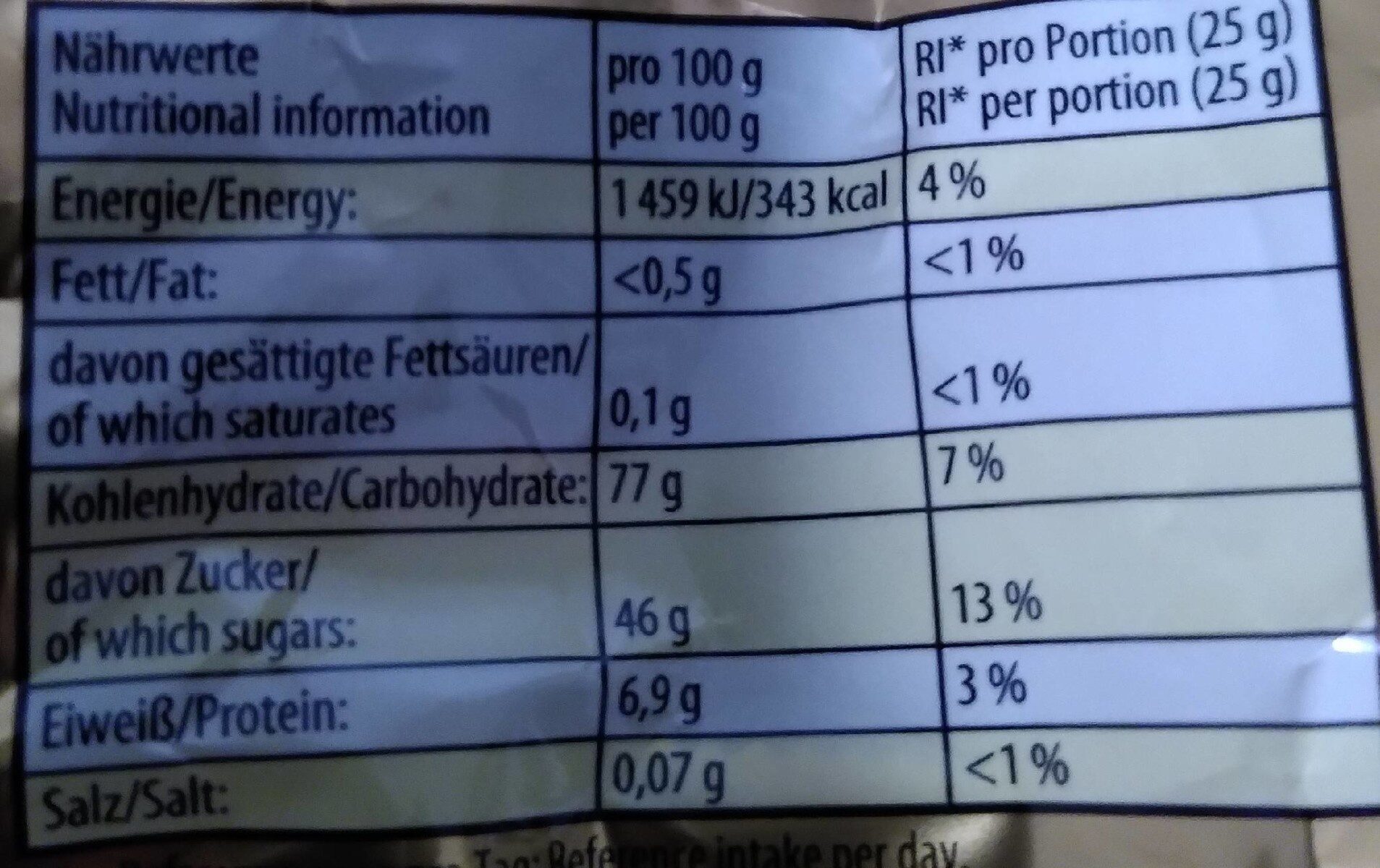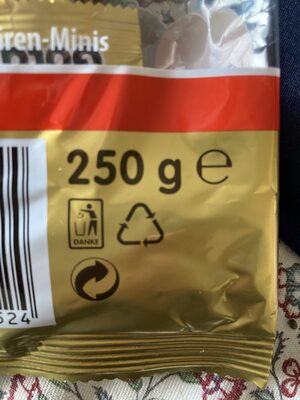Haribo Goldbären - 250g
This product page is not complete. You can help to complete it by editing it and adding more data from the photos we have, or by taking more photos using the app for Android or iPhone/iPad. Thank you!
×
Barcode: 4001686301524 (EAN / EAN-13)
Quantity: 250g
Brands: Haribo
Categories: Snacks, Sweet snacks, Confectioneries, Candies, Gummi candies, Gummy bears
Matching with your preferences
Report a problem
Data sources
Product added on by kiliweb
Last edit of product page on by inf.
Product page also edited by arnolino, date-limite-app, ecoscore-impact-estimator, foodrepo, mimamurkel, openfoodfacts-contributors, packbot, prepperapp, scanbot, teolemon, yuka.VjdCZUZLY2pvL00xeGZjRTl6akUwT0pXbk1TWVRWK1hMTTh5SVE9PQ, yuka.sY2b0xO6T85zoF3NwEKvlklnXsLCujLePAX6um7QxOvQcZ3TTN12uqHDAqs, yuka.sY2b0xO6T85zoF3NwEKvlml8UcuPnGzqZzfhnWmH69eTIM32YuNo4pLhEqo, yuka.sY2b0xO6T85zoF3NwEKvlnxLT-HM-xLvDCTSiBba2curIqzsQ9xzv9Cjbqs.


